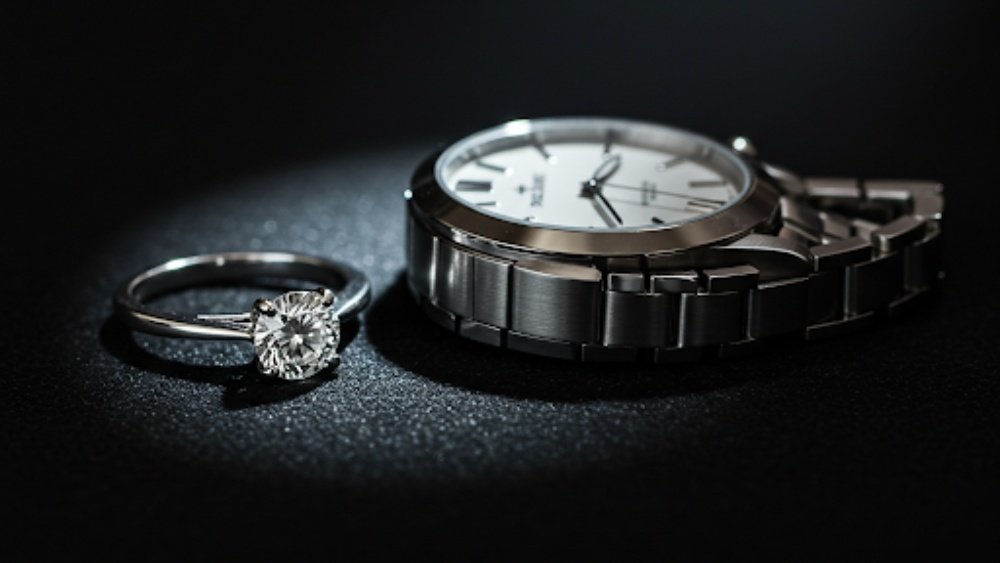
When it comes to buying an engagement ring, one of the most common questions is, “How much should I spend?”—a question with no one-size-fits-all answer. Traditional rules, modern expectations, and individual financial circumstances all influence the decision, and if you’re considering an antique or vintage ring, standard pricing guidelines often fall short. At Sam’s Antique Blog, we believe that an engagement ring should reflect not just your love but also your personal values. That’s why we’re here to cut through the myths and offer practical, thoughtful advice for choosing antique engagement rings that make both financial and emotional sense. We’ll also help answer another common question: What is the best time to buy an engagement ring?
The Origins of the “Two Months’ Salary” Rule

The idea that an engagement ring should cost two months’ salary is actually the result of a clever marketing campaign by the diamond company De Beers. In the 1930s, following the economic struggles of the Great Depression, De Beers introduced the notion that a diamond ring worth one month’s salary was the proper way to express love and commitment. Over time, the company doubled that suggestion, and the “two months’ salary rule” took hold. The campaign’s success helped establish the diamond ring as an essential symbol of engagement in Western culture.
Despite its widespread influence, this rule was created to drive diamond sales—not to support couples in making financially wise choices. In recent years, more people have started to question the tradition and are instead choosing rings that reflect their personal style and financial situation. For many, the focus has shifted from meeting an arbitrary price tag to finding a meaningful, affordable symbol of love. Another important consideration is what is the best time to buy an engagement ring, as timing can significantly affect price and selection.
Average Spending in Today’s Market

In the U.S., studies suggest the average engagement ring cost ranges from $5,000 to $7,500, though this varies widely based on location, income, and personal preference. Some people spend less than $1,000, while others invest $20,000 or more in custom or antique pieces.
Rather than focusing on the average, a better question is: What makes sense for you?
Key Considerations:
- Your financial situation. You shouldn’t go into debt to buy a ring.
- Your partner’s expectations. Do they want a large center stone, or do they love understated vintage elegance?
- Long-term goals. Saving for a house, travel, or wedding? Make sure the ring budget fits into the bigger picture.
Why Antique Engagement Rings Offer Exceptional Value
Antique and vintage engagement rings are a unique category in the jewelry market. Not only do they offer distinct aesthetics and craftsmanship, but they can also be more cost-effective than modern mass-produced rings. Another important factor to consider is what is the best time to buy an engagement ring, as timing can influence both price and availability of these one-of-a-kind pieces.
Here’s why:
- No artificial markups. Modern diamond prices are often inflated through branding and marketing.
- Better craftsmanship. Older rings were often handcrafted, not machine-made—giving you more value per dollar.
- Sustainability. Antique rings are inherently eco-friendly—no new mining, no new materials.
- Rarity. You’re buying something truly one-of-a-kind. This intangible value isn’t always reflected in the price, but it makes the ring feel far more meaningful.
Price Ranges for Antique Engagement Rings
You might be surprised to learn that antique rings exist at almost every price point. At Sam’s Antique Blog, we’ve seen stunning examples at a range of budgets:
| Budget Range | What You Might Expect |
| Under $1,000 | Delicate Edwardian bands, early 20th-century seed pearl rings, modest Victorian solitaires |
| $1,000–$3,000 | Art Deco diamond or sapphire rings, filigree designs, white gold settings |
| $3,000–$7,000 | Larger center stones, platinum settings, rare cuts (like Old Mine or European cuts) |
| $7,000+ | High-carat diamonds, designer estate pieces, signed jewelry (Cartier, Tiffany), rare colored stones |
Of course, condition, provenance, and restoration work can influence price—but these ranges give a good starting point.
How to Set Your Ring Budget (The Smart Way)

Instead of following an arbitrary rule, try this more thoughtful approach:
1. Start With a Total Proposal Budget
Factor in:
- The ring
- Any resizing or restoration
- The proposal event or trip
- Insurance and appraisal
This gives you a clear picture of what’s possible.
2. Be Transparent With Your Partner
More and more couples are choosing to shop together. If you’re buying an antique ring, this is especially helpful—since each piece is one-of-a-kind, it ensures they love the style and feel.
3. Leave Room for Unexpected Costs
Antique rings may need minor repairs, sizing, or new appraisals. Build in 10–15% extra to cover these comfortably.
Should You Finance an Engagement Ring?
While financing options exist, many antique ring buyers prefer to save and pay outright. However, if you’re considering financing:
- Use 0% APR offers if available.
- Avoid high-interest credit cards.
- Only finance if you have a clear repayment plan.
Remember: your relationship is more valuable than any ring. Choose a piece that brings joy, not financial stress.
Final Thoughts: Meaning Over Money
Engagement rings are powerful symbols of love, but their meaning comes from the connection they represent—not the price tag. Whether you fall in love with a $900 Edwardian piece or invest in a $10,000 Art Deco treasure, the goal is to find a ring that reflects your partner’s spirit, your shared history, and your vision for the future.
At Sam’s Antique Blog, we encourage couples to focus on value, beauty, and authenticity—qualities that antique rings have in abundance. After all, love is timeless. Your ring should be too.
For more article “CLICK HERE“







